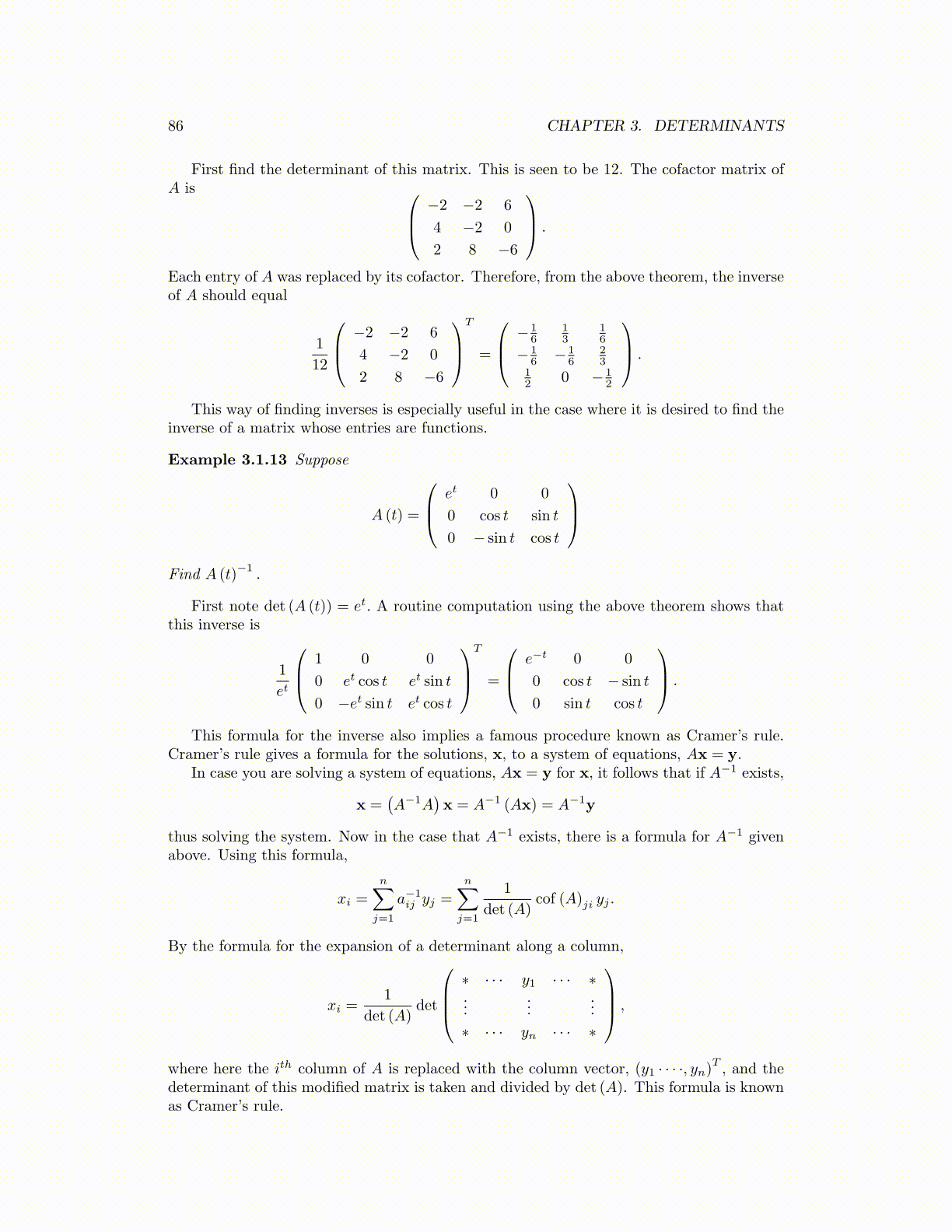
86 CHAPTER 3. DETERMINANTS
First find the determinant of this matrix. This is seen to be 12. The cofactor matrix ofA is −2 −2 6
4 −2 0
2 8 −6
.
Each entry of A was replaced by its cofactor. Therefore, from the above theorem, the inverseof A should equal
1
12
−2 −2 6
4 −2 0
2 8 −6
T
=
− 16
13
16
− 16 − 1
623
12 0 − 1
2
.
This way of finding inverses is especially useful in the case where it is desired to find theinverse of a matrix whose entries are functions.
Example 3.1.13 Suppose
A (t) =
et 0 0
0 cos t sin t
0 − sin t cos t
Find A (t)
−1.
First note det (A (t)) = et. A routine computation using the above theorem shows thatthis inverse is
1
et
1 0 0
0 et cos t et sin t
0 −et sin t et cos t
T
=
e−t 0 0
0 cos t − sin t
0 sin t cos t
.
This formula for the inverse also implies a famous procedure known as Cramer’s rule.Cramer’s rule gives a formula for the solutions, x, to a system of equations, Ax = y.
In case you are solving a system of equations, Ax = y for x, it follows that if A−1 exists,
x =(A−1A
)x = A−1 (Ax) = A−1y
thus solving the system. Now in the case that A−1 exists, there is a formula for A−1 givenabove. Using this formula,
xi =
n∑j=1
a−1ij yj =
n∑j=1
1
det (A)cof (A)ji yj .
By the formula for the expansion of a determinant along a column,
xi =1
det (A)det
∗ · · · y1 · · · ∗...
......
∗ · · · yn · · · ∗
,
where here the ith column of A is replaced with the column vector, (y1 · · · ·, yn)T , and thedeterminant of this modified matrix is taken and divided by det (A). This formula is knownas Cramer’s rule.